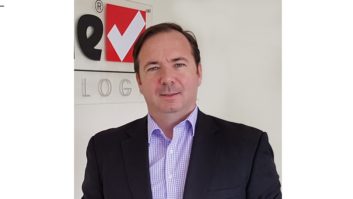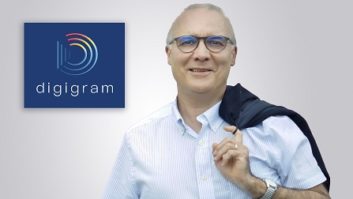In the Oct. 15 issue of Radio World Engineering Extra, I discussed the growing number of cases where there has been actual or alleged interference to 4G LTE installations (Is There a 4G Problem?). These situations occurred largely at co-located transmitter sites where FM stations and wireless carriers share the same site or the same tower. I promised to look at some of the causes of this interference and to give some background about 4G LTE systems that are now being deployed.
As a beginning note, my sources for information on this topic are somewhat limited to what comes up on the public Internet. Sources like Wikipedia are a good resource and pointer to more detailed engineering information, much of which is publicly available, such as the standards used by wireless carriers. Manufacturers of equipment used by wireless carriers, such as panel antennas, offer specifications for their equipment openly or upon request. On the other hand, as would be expected with a newly developed technology, not all the precise details of specific wireless carrier implementations are public; these represent their own intellectual property. I have done the best I could to put together this picture of what we are facing from a technology perspective.
Communications Consultant Scott Baxter has a wealth of information on 4G systems at his website, for those looking to learn more about how cell systems and LTE work.
In addition, I would like to extend a special thanks to Brian Szewczyk and Tim Anderson at GatesAir for their contributions to this article.
SO, WHO’S SHANNON?
AND WHAT’S HIS PROBLEM?
The field of digital communications can largely trace its development to the works of Claude Shannon, a former professor at the Massachusetts Institute of Technology. Shannon essentially founded the science of Information Theory with the publication of the article “A Mathematical Theory of Information” in the Bell Laboratories Journal in 1948, co-authored with Warren Weaver. Recognizing the significance of this work, it has subsequently been published under the title “The Mathematical Theory of Information.”
In this work, Shannon proposed that all communications systems essentially were methods of conveying information, which could be described entirely by mathematics. It is this realization that all communications, including voice and pictures, could be calculated by mathematics that led to the digital revolution.
The article is well worth reading and widely available. It was first published in paperback in 1963 and is surprisingly easy to follow; I highly recommend it.
One of the most important conclusions that Shannon developed in his work was to define the physical limit of information transmission in terms of well-understood properties: signal power, bandwidth and interfering noise. This is the often-mentioned Shannon Limit, also known as the Shannon-Hartley Theorem, which I will write as follows:
C = B log2 (1 + S/N)
where:
C = the capacity of a communications channel in bits per second
B = the bandwidth in Hertz of the channel
log2 = logarithm in base 2 (binary)
S = signal power in watts
N = noise power in watts
Fig. 1: The frequency plan of the 700 MHz spectrum, which was recently auctioned off for use by wireless carriers in the U.S. Source: FCC
(CLICK TO ENLARGE) There we have it — an expression that tells us the maximum amount of data we can transmit error-free in terms of available spectrum, power levels and background electromagnetic noise (a constant over a given bandwidth if we ignore man-made electromagnetic signals).

Why is this important to this topic? Because wireless carriers only have so much bandwidth, and demand for wireless data has continued to increase at logarithmic rates. The Shannon Limit describes the physical maximum they can achieve. If you plug in a few numbers, you can see that for every decibel increase in the noise floor the ultimate capacity of the channel drops.
THE LAYOUT
To try to detangle the various standards bodies and modulations schemes employed by cell carriers worldwide would be a task far beyond what I can do in this column; but for the purposes of analysis, I would like to take a look at the deployment of 4G LTE in the 700 MHz band. This band was recently made available in the United States by displacing UHF television channels during the conversion to digital. Because this is new spectrum for wireless, it is at the center of a rapid deployment of new technology.
Take a look at Fig. 1, which is a frequency plan for the 700 MHz band published by the FCC. 4G LTE uses a form of frequency division multiplex, which defines a set of transmit frequencies for use by the wireless base station that is exclusive of a separate set of transmit frequencies used by the mobile unit (known as the UE, or User Equipment, in current wireless lingo). The benefit of separate download and upload frequencies is the lack of interference between them, enabling full duplex communication at high speeds.
Both ATT and Verizon wireless are deploying LTE at 700 MHz, with Verizon using Upper Block C, which uses the range of 776 to 787 MHz for uplinking, and ATT using Lower Blocks B and C with a range of 704 MHz to 716 MHz for uplinking.
Fig. 2: This example represents a worst case for harmonic emissions at the FM station. The FM antenna essentially points at the cell panel antenna. The gain of the FM antenna is added to the gain of the cell panel antenna (18 dBi).
(CLICK TO ENLARGE) When it comes to FM interference, the low-power uplink frequency range is of interest because it comes from the UE, which has very limited power. If we consider as an example the eighth harmonic of broadcast channel 88.9 MHz, we see that it falls at 711.2 MHz, which is in the uplink frequency band for ATT. Similarly, many other FM channels have seventh or eighth harmonics that fall into one of these two bands. Future 4G deployments may use other blocks in the 700 MHz band for uplinking.

4G LTE systems use Orthogonal Frequency Division Multiplex, a system that is familiar to broadcasters who are broadcasting HD Radio. OFDM uses many hundreds of small carriers, each modulated at a slow rate, to reduce frequency selective fading due to multipath. The sum total of all the data on these small carriers is then aggregated to achieve a higher data rate. Groups of these individual carriers can be aggregated in small to large numbers depending on the required data rate. The aggregation of carriers per call is based on a multitude of factors and is essentially random.
WHAT IS 4G’S PROBLEM?
The potential for a problem exists due to the very low signal levels available to the UE, which is limited to a maximum output power of around 200 mW maximum, or 23 dBm. Note here the “m” refers to the reference value of 1 mW. This low power theoretically limits the range of a smartphone to the region where its relatively tiny signal is above the electromagnetic noise floor. However, this limit is dynamic; it varies based on the data rate and the amount of bandwidth committed.
The background electromagnetic noise over a bandwidth of 10 MHz, an entire LTE block of OFDM carriers, is calculated with the following formula:
Noise power (in dBm) = −174 + 10 log10 (bandwidth in Hertz) = −104 dBm
Fig. 3: This example shows how cabinet radiation could potentially interfere with wireless reception of low-level signals.
(CLICK TO ENLARGE) By this measure, the total interference signal generated by an FM station would need to be below this thermal noise level to prevent the possibility of interference to the cell station receiver. But, under certain conditions, even lower levels of interference could be detected.

In another scenario, let’s look at the noise floor using a more realistic uplink data rate of 128 kbps, using a bandwidth of 720 kHz. Using the above equation now gives a noise floor of −115 dBm. This would suggest that under conditions using a more limited bandwidth, outside energy in just the right portion of the uplink channel could cause interference at lower levels. This would limit the range of the cell site to areas closer to the tower where signal strengths are enough to overcome the interference.
In actuality, it is more complex than just looking at potential noise floors. The wireless receiver itself introduces noise of 2–5 dB (called the Noise Figure). 4G LTE uses a range of coding types and data rates that vary based on the signal conditions. In edge conditions where signals are weaker, LTE uses a modulation scheme of Quadrature Phase Shift Key at a low data rate. Some of the coding schemes allow LTE to effectively capture data that is below the noise. On the other hand, to achieve the maximum data rates, higher-order modulation schemes up to as high as 64 QAM (quadrature amplitude modulation) are employed. This far more fragile scheme requires from 15–20 dB of additional signal margin compared to QPSK and could only operate in areas where the signal strength of the UE was very high or on the downlink side, which has much more power.
AN FM EXAMPLE
For this example, see Fig. 2, which shows an FM tower at approximately the same height as an adjacent cell tower 1 km away. The FM is pointing straight at the 4G panel antenna. For this example let’s assume we have a class A FM operating at the full power of 6 kW ERP on a frequency (88.9 MHz) whose eighth harmonic falls into the uplink band of the LTE site.
The formula for free space loss in decibels is:
Path loss = 20 log10 (d) + 20 log10 (f) + 32.45 [1]
where:
d = distance in kilometers, and
f = frequency in MHz (711.2 MHz)
Substituting in the above, we get a path loss of −89.48 dB at this distance. Since the LTE site uses a receive antenna with 18 dB of gain, the total path loss measured at the receiver is −71.48 dBm.

Fig. 4: A FAX40 transmitter under test for cabinet radiation. The transmitter was rotated to test all sides for any spurious signals at 784 MHz.

Fig. 5: It takes specialized equipment to make measurements down to the thermal noise limit. Even this high-gain antenna wasn’t able to detect any spurious harmonics. The FM station operates at 6 kW, or about +67.8 dBm. If spurious emissions are at the FCC regulated −80 dBc in this instance, the potential interference signal would be the output power, minus 80 dB, and then minus the path loss, which results in −83.48 dBm. Antenna and line loss differences on the FM for the eighth harmonic vs. the carrier frequency would improve it another 2–3 dB, but it’s still pretty high for this cell site if only the FCC minimum is met, compared to the thermal noise floor of the cell band.
In two recent proofs of new transmitters, I measured up to the eighth harmonic and could find no trace of signal at more than 100 dB below the carrier level. This level of performance brings the spurious level down to less than 106 dBm, which is close to the theoretical thermal noise plus noise figure in the receiver in our calculations above. External low pass filtering could lower this even further if necessary.
A SECOND FM EXAMPLE
In some cases, interference to a wireless site has been caused by cabinet radiation. In fact, it appears that when a cell carrier is exploring a problem at a particular site, they will show up with a spectrum analyzer and high-gain 700 MHz antenna and sweep around at ground level, looking for traces of signal. Fig. 3 shows an FM tower at a distance of around 10 m from a wireless tower with an antenna at 60 meters height. Here, the radiation path is from the transmitter shed and up into the air where it is received by the cell panel antenna. The distance from shed to cell panel antenna works out to be 60.8 meters. The total path loss equals: −24.3 + 57 +32.45 = 65.2 dB using equation [1] again.
If we assume the FM station is operating with 3.5 kW TPO, that works out to 65.4 dBm of carrier power. These two values (TPO and path loss) essentially offset each other, which leaves interfering signal levels at −80 dBm if cabinet radiation is only meeting the FCC minimum specification. In this case, we are assuming the downward gain of the wireless receive antenna is around 0 dB due to a very narrow vertical pattern. However, we should also consider a minimum of 15 dB of attenuation due to the transmitter shelter, resulting in an interference level of around –95 dBm. No additional filtering on the transmitter output would improve this number since the signal is passing through the cabinet and bypassing the antenna.
A little more than 10 years ago Paul McLane, editor of Radio World newspaper, came to me with an idea for a new publication to supplement Radio World. At the time, I had been writing for Paul for a few years and enjoyed the experience. I was surprised and honored by the offer to be the first technical editor for Engineering Extra and I jumped on board for what has been one of the great learning experiences of my life.

The idea was a success and has been going steadily ever since, bringing you the best and latest information on the engineering side of the radio industry as we could muster.
After 62 issues, I will now be stepping aside as technical editor, leaving you in the capable hands of Rich Rarey.
I am going to miss Engineering Extra and the regular routine of putting together a mix of technical papers, industry interviews, opinion pieces and columns on all technical topics in radio. In particular, I have really come to enjoy this column, which was my original contribution to every issue.
So many thank yous are in order that I apologize to anyone that I leave out or don’t have space to print their names. First and foremost is a huge Thank You to Paul McLane for believing in me and the need for a publication like Engineering Extra. He has been a great mentor to me in the crafts of both writing and editing, and also a good friend. Second, a giant Thank You to Karen Lee, our production editor, who makes every issue look great and who I could count on to catch me when I stumbled. Thanks to John Casey for being as supportive a publisher as anyone could ask for (and a good companion on the show floor at NAB too).
Last and not least, a thank you to all of our writers and contributors, in particular the regular columnists whose reliability and ability to meet a quick deadline make an editor’s job so much easier. I hope that I have been of some assistance to all of you and that your experience with Engineering Extra has been a good one.
I still plan to contribute to Radio World and Engineering Extra and hope it will not be too long before I make my way into these pages again. In the meantime, please enjoy my final issue and stay tuned in to Engineering Extra.
— Michael
I spoke with Tim Anderson, manager of Radio Market and Product Development at GatesAir, one of the leading manufacturers of FM transmitters, and asked about cabinet radiation in the FAX series of transmitters, their current model. According to Anderson, the cabinet radiation on a FAX40 transmitter is −127 dB below carrier power, although they were limited to this number by the noise floor of the test equipment. This should provide performance low enough that even in worst-case locations, cabinet radiation would not be a problem. Figs. 4 and 5 show a transmitter under test at GatesAir.
IT’S THE SENSITIVITY
I return to the question: Does 4G have a problem; specifically an FM problem? As the two FM examples show, if an FM station meets the bare minimum specification for radiation at eighth harmonic, it’s possible this could be a problem, depending on the exact geometry and proximity between the FM and 4G sites. However, assuming recent vintage equipment that is properly installed and operating as intended, there should be sufficient margin of performance above the FCC specifications to prevent problems.
As I said in my last column, it is important to make thorough and accurate proof measurements as required by the FCC Rules. FM engineers should know if their equipment is in compliance, and if possible by how much, if they are working at a co-location site.
On the other hand, the cell companies now deploying 4G may themselves be somewhat optimistic in their expectations of finding locations where the background electromagnetic noise is at the thermal limit. Particularly in urban areas this would seem to be nearly impossible given all the sources of man-made electromagnetic radiation, which are largely unregulated. Perfectly quiet environments are more typical of the lab than the real world.
Michael LeClair is chief engineer for radio stations WBUR(AM/FM) in Boston; he has been technical editor of Radio World Engineering Extra since its inception in 2005.
Comment on this or any story. Send an email to [email protected].







